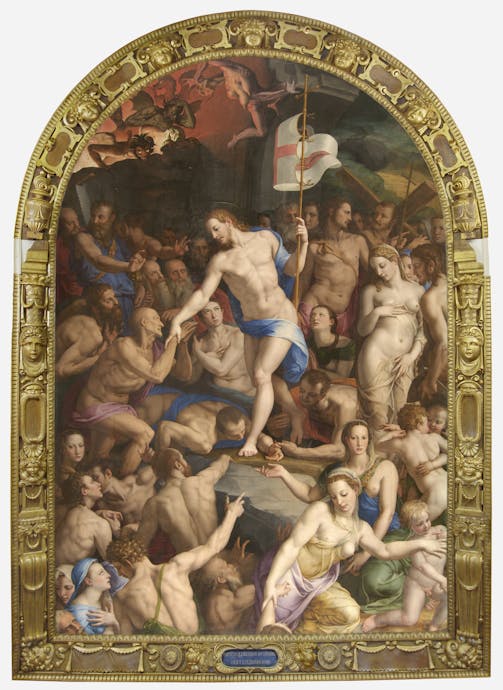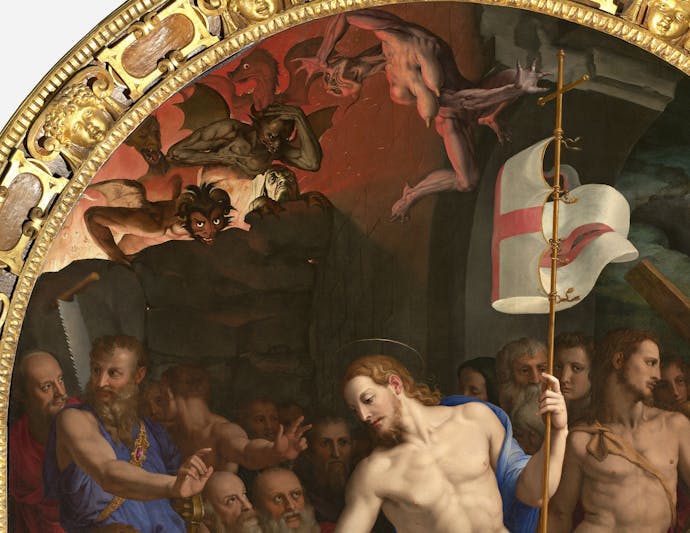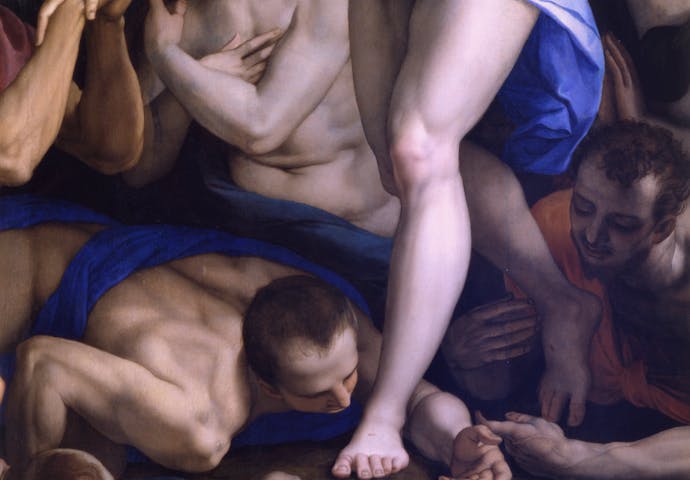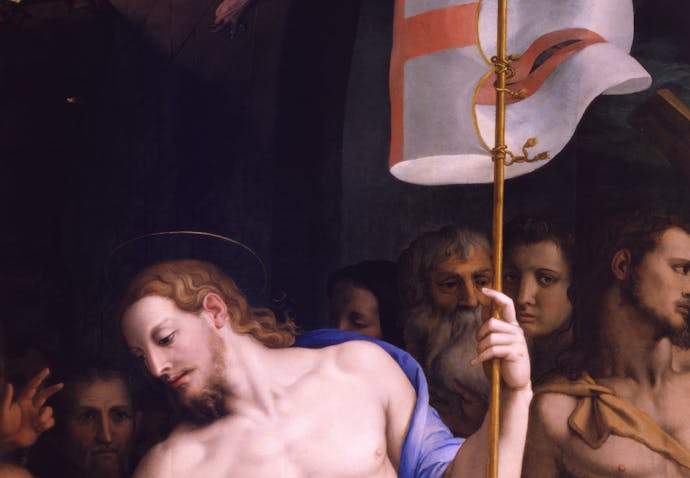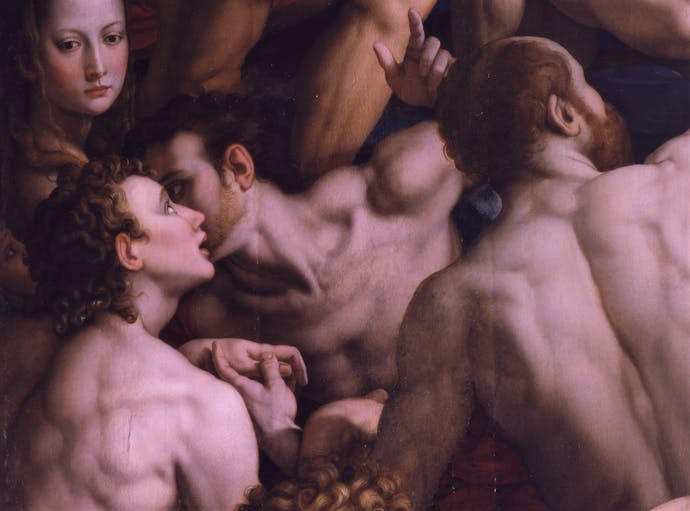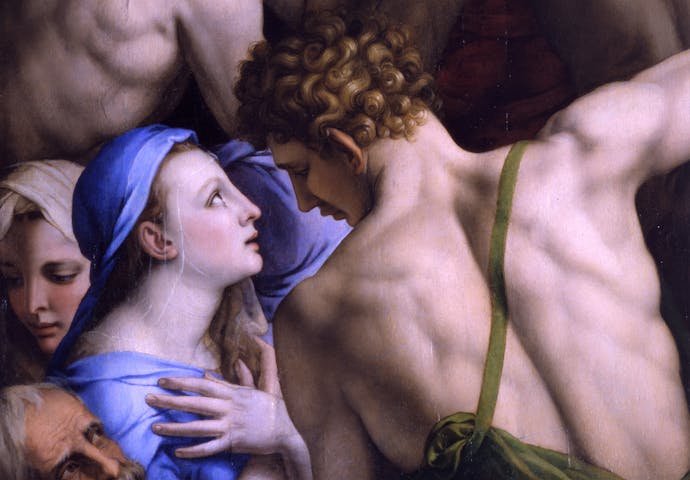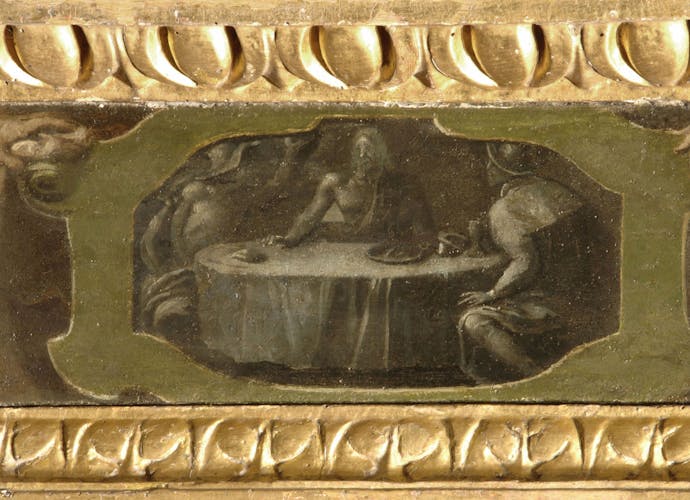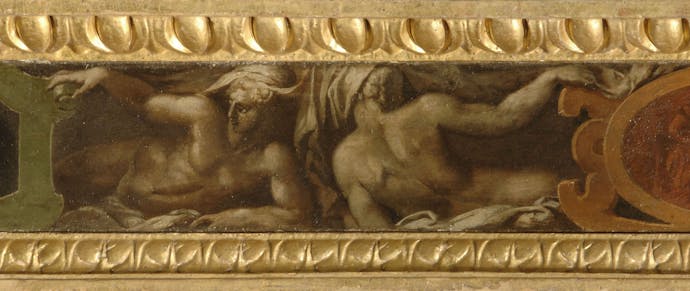Bronzino
Artist: Bronzino (Agnolo di Cosimo Tori; Florence 1503-1572); Battista di Marco del Tasso (Florence 1500-1555), attributed (frame)
Title: Descent of Christ into Limbo
Altar step: The Supper at Emmaus; The Incredulity of St. Thomas; Pentecost; Cardinal Virtues, attributed
Date: 1552
Material and tecnique: oil on wood (altarpiece and step); carved and gilded wood (frame)
Dimensions: 443 x 291 x 4 cm (altarpiece); 350 x 24 x 26 (step)
Inscription: "MDLII [1552] / OPERA DEL / BRONZINO / FIO[RENTIN].O", on Judith's sword
Position: Novitiate, Medici Chapel, on permanent loan from the Gallerie Fiorentine, inv. 1890 no. 1580
Vasari tells us that Giovanni Zanchini commissioned Bronzino to paint an altarpiece with Christ's Descent into Limbo for his chapel to the left of the main door in Santa Croce. The panel was praised when first revealed in 1552, but it attracted criticism as early as 1584 because the nude women in poses considered lascivious lacked the decorum demanded by the Counter-Reformation. It was moved to the Uffizi in 1821 but was returned to Santa Croce in 1912 and displayed in the museum with its predella, though this was subsequently detached and moved to the convent.

Bronzino, Altar step from Christ's Descent into Limbo, 1552. Santa Croce, Novitiate, Medici Chapel
Seriously damaged in the flood of 1966, the painting was restored by the Opificio delle Pietre Dure, reunited with its predella and placed in the Refectory. It was moved in 2014 to its present position to avert the risk of flood damage.
The subject is taken from the apocryphal Gospel of Nicodemus and Jacobus de Varagine's Golden Legend which tell us that before His resurrection, Christ descended into Limbo to rescue the just who had lived before his time, including Adam, Seth, Isaiah, Simeon, David, Habakkuk, Micah, Enoch, Elijah and John the Baptist, all of whom Dante mentions in Canto IV of his Inferno.
Terrifying devils peek out of the hellish glow above. Vasari mentions the presence of contemporary portraits – Pontormo, Giovan Battista Gelli, Bachiacca, Costanza da Sommaia and Camilla Tedaldi dal Corno – who have since been variously identified in the painting. To set his religious scene in his own era, Bronzino resorted to a 15th century ploy that he had already adopted in the Chapel of Eleonora of Toledo in Palazzo Vecchio.
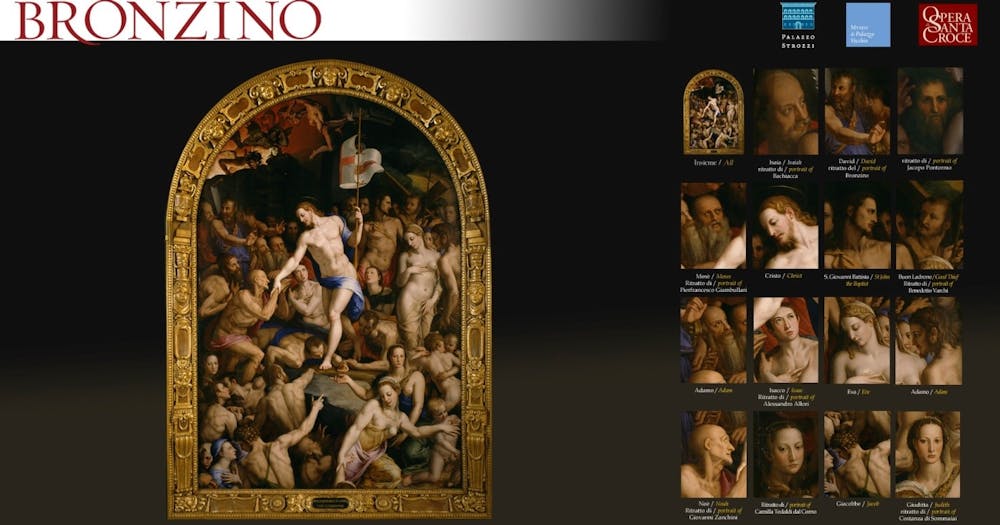
Touch screen made for the exhibition on "Bronzino. Artist and poet at the court of the Medici", Palazzo Strozzi 2010-11
In his composition the artist looks to Michelangelo for his muscular male nudes and contrapposto poses, but also to classical statuary for Eve and the female figures transformed into Venuses. We probably owe the design of the frame to Bronzino himself, who is known to have supplied designs for other objects of applied art, while the carver has been identified as Battista di Marco del Tasso.
